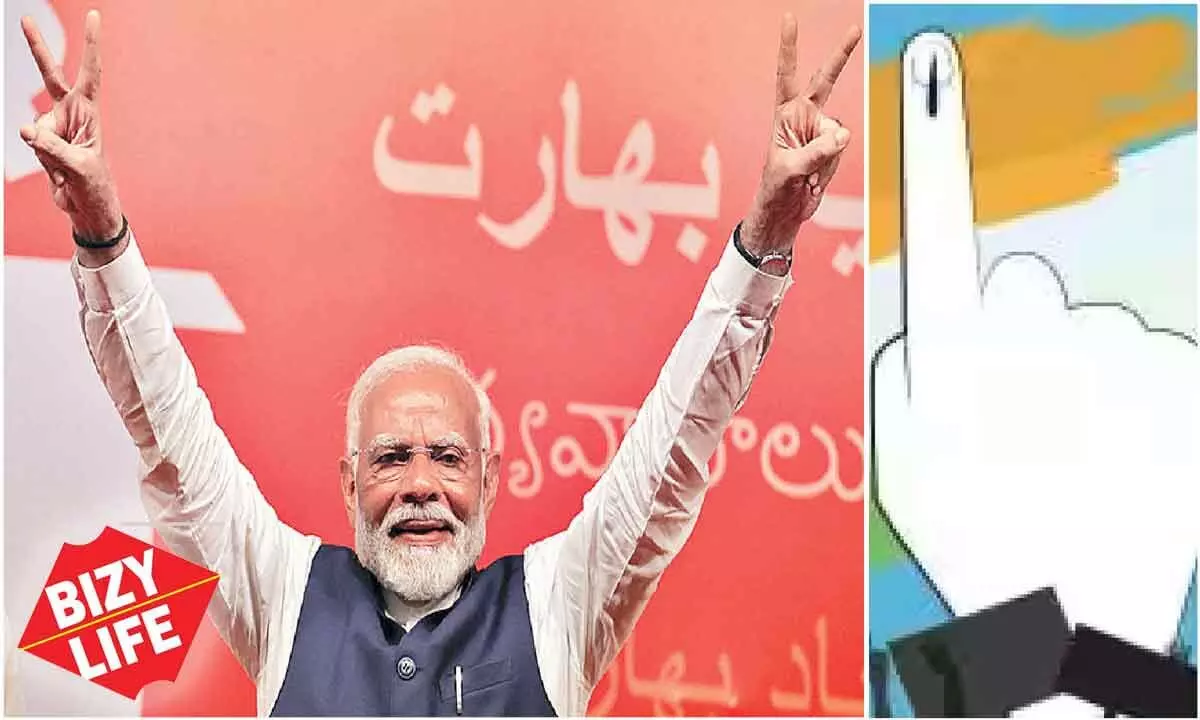It’s time Modi becomes a statesman and takes all religions along in 3.0
He should channelise all his energies at laying a right, well-balanced foundation for India to emerge as Viksit Bharat
image for illustrative purpose

Despite Bharatiya Janata Party (BJP) winning 240 seats and thus falling short of a simple majority in Lok Sabha by 32 seats, Narendra Damodardas Modi became the country’s Prime Minister for a third consecutive term. Of course, the Indian National Congress (INC), the main Opposition party that in the past ruled the country for several decades, increased its tally significantly from 52 in 2019 to 99 in the recent elections. The Indian National Developmental Inclusive Alliance (I.N.D.I.A) bloc of which Congress is the major partner, also did well. That is a commendable performance for a political party and bloc that were written off by many pre-poll surveys.
But in elections, eventually, it is the overall winner who takes it all. BJP, being the single largest party, formed the government at the Centre with its National Democratic Alliance (NDA) partners, including Telugu Desam Party (TDP) that stormed back to power with an emphatic win in the Andhra Pradesh Assembly and Lok Sabha polls, and Janata Dal (United) which is in power in Bihar in alliance with the saffron party. The fact of the matter is that a political party and a political leader got a chance after more than six decades to form the government at the Centre for a third time in a row. That’s a rare achievement indeed and no one can take credit away from Modi as regards that milestone.
But what are two key factors that have helped BJP in the last elections? The foremost is Modi’s non-corrupt image, which continued to bring in votes for the saffron party. The Opposition, especially Congress leader Rahul Gandhi consistently leveled allegations about an alleged nexus between Modi and Adani Group founder Gautam Adani, but this narrative did not cause much damage to the saffron party’s electoral prospects.
Secondly, it is BJP’s development agenda that attracted youngsters towards the Prime Minister. Without these two factors, BJP would have lost the election this time.
Interestingly, Modi started his campaign for the 2024 General Election with a focus on development. But he suddenly changed his track after the first phase and tried to polarise voters on religious lines by talking about snatching of mangalsutras from Hindu women by Congress and their distribution to other ‘community’ people. We know what the other community is. But has this sudden rhetoric against Muslim community paid electoral dividends for the saffron party?
According to the poll result data, the saffron party lost the highest percentage of seats in the fifth phase. In this phase, the number of seats it won had plunged by a whopping 44 per cent when compared to its tally in 2019. The second worst performance came in the seventh and final phase wherein its tally was reduced by a significant 32 per cent from that of the last election. In the first phase, its tally came down by 25 per cent while the downfall was by 22.5 per cent in the sixth phase. However, the saffron party did relatively better in the second and fourth phases. In the fourth phase, its tally was down by just seven per cent, the lowest among all phases. In the second phase, it lost nine per cent seats. Overall, its Lok Sabha tally came down by nearly 21 per cent in 2024 from that of 2019.
The phase-wise performance of the saffron party clearly shows that Modi’s rhetoric against Muslims did more damage to the saffron party in the polls.
It’s an undeniable truth that the middle class Hindus are the core support base of the BJP. For many of them, Hinduvta means protecting Hinduism. It’s more of a pro-Hindu stance, than an anti-Muslim stand. There is a lot of difference between pro-Hindu and anti-Muslim or anti-minority stand. So, BJP will stand to lose heavily politically if it pursues aggressive anti-minority strategies. This applies to Modi as well. Further, BJP can’t ignore the country’s Muslim population if it wants to remain in power.
According to the 2011 census, India had a Muslim population of 17.22 crore that accounted for 14.2 per cent of the total population. Some estimates indicate that the percentage is more or less the same now, though the population count may have increased to around 20 crore. That way, India is home to the third highest population of Muslims in the world after Indonesia and Pakistan. The role of such a large population is essential for the country to progress well economically.
As I said in the past, India can emerge as a developed nation only if its ruling leadership takes all creeds, castes, religions and regions along. Otherwise, India will remain a poor country. After assuming office, Modi has not given any signals that can be construed as anti-Muslim. It is better the Prime Minister continues this tempo, going forward. However, the absence of a Muslim minister in the new Union Cabinet is not a good sign.
Further, it is high time Modi becomes a statesman and takes all religions along in his record-equalling third term. He should channelize all his energies at laying a right, well-balanced foundation for India to emerge as Viksit Bharat. That’s what India needs now. If he does that, he will leave behind a good legacy for the country. Let’s hope that happens.

